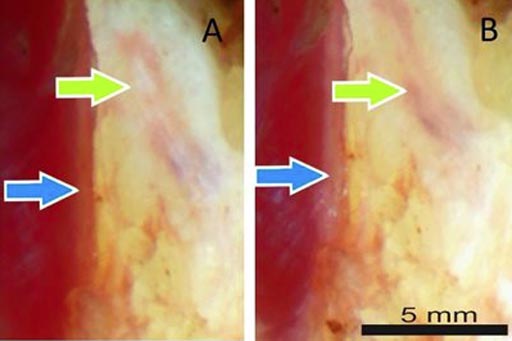Intraoperative Nerve Imaging Makes Surgery Safer
By MedImaging International staff writers
Posted on 30 Aug 2017
A new study describes how collimated polarized light imaging (cPLI) can aid real-time identification of nerves in the human hand.Posted on 30 Aug 2017
Developed at Academic Medical Center (AMC, Amsterdam, The Netherlands) and Utrecht University (UU; The Netherlands), the long working-distance CPLi tool identifies peripheral radial nerve branches in a human hand by imaging nerve specific anisotropic optical reflection. After first testing the technique on animal tissue, the researchers used it to examine 13 tissue sites from the hand of a human cadaver. A surgeon looked for nerve tissue at these sites under typical surgical illumination, while another surgeon used CPLi for assessment.

Image: A new study describes how polarization of light helps identify nerve tissue (Photo courtesy of AMC).
Histological evaluation was then used to verify the presence of nerve tissue at each site. The results showed that the surgeon using visual inspection correctly identified nerve tissue in 10 of the 13 cases (77%) while the surgeon using CPLi correctly identified nerve tissue in all cases (100% positive correct score). The technique will soon be tested during live surgery in order to better understand how the optical reflection of nerves might vary among patients under various surgical conditions. The study was published on August 16, 2017, in Biomedical Optics Express.
“We have shown that nerves can be distinguished in human tissue by detecting the interaction of light with the structure of nerves, without the need for fluorescent markers or physical interaction,” said lead author Kenneth Chin, a medical student at AMC. “Using an intraoperative, noninvasive real-time method minimizes potential nerve damage, which can result in fewer negative consequences such as reduced function, loss of sensation, or chronic pain.”
CPLi uses a collimated polarized beam of light to illuminate the tissue. When the parallel polarized light passes through a nerve, the tissue's unique internal structure reflects in a way that is dependent on how the nerve fiber is oriented, compared to the orientation of the polarization of the light. By rotating the polarization, the reflection appears to switch on and off, making the nerve tissue stand out from other tissue.
Related Links:
Academic Medical Center
Utrecht University














